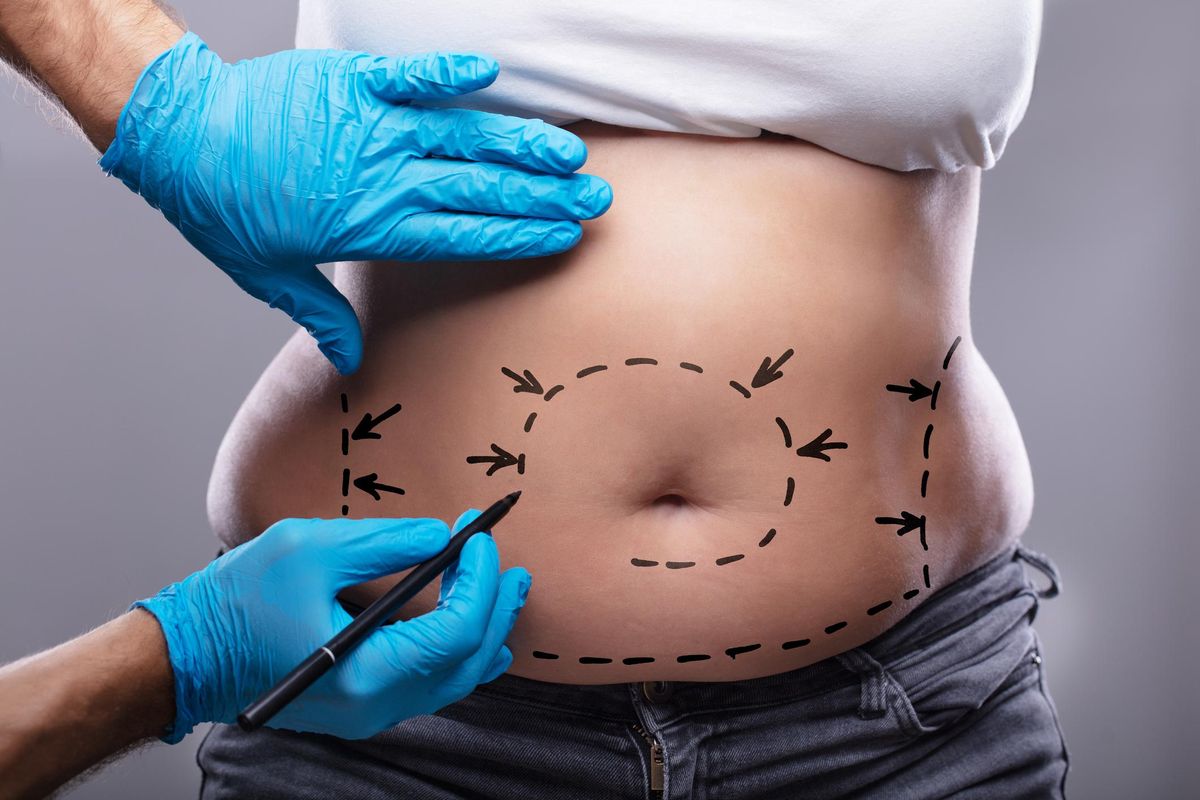Kim Cressell had a tummy tuck after her third pregnancy at the age of 36. "I am happy I had it because my post-pregnancy belly never went back down to normal," Cressell said. But there were elements of the surgery Cressell didn't anticipate.
"While the procedure was explained to me by the surgeon, there was little talk of the post-surgery and what that experience would be like," she explained. For instance, for a week after the surgery she had two bags that hung off of her stomach connected to tubes to drain post surgical fluids. And sometimes these slipped and pulled on her healing stomach. "It was like torture," she recalls.
Tummy tucks are a desired procedure among many women, like Cressell, especially those who have undergone a pregnancy or a significant weight loss. The procedures have risen in popularity by 56% since 2000. Here's what to know about them:
The basics
A tummy tuck, also known as an abdominoplasty, is a surgical procedure that creates an abdominal profile that appears younger, smoother and firmer. "The procedure removes excess skin and fat from the middle and lower abdomen and tightens the muscles of the abdominal wall," explained Dr. Andy Wongworawat, a board-certified plastic surgeon and co-founder of Advanced Institute for Plastic Surgery. He says to think of it like tucking in a shirt. "But instead of just hiding the extra fabric, a tummy tuck permanently removes the excess skin and fat, while also tightening the underlying muscles to give a more sculpted shape to the torso."
Who should get the surgery?
Good tummy tuck candidates:
- Have excess skin and/or fat in the abdomen and are bothered by its appearance
- Are physically healthy
- Have realistic expectations
- Are at a stable weight
- Do not smoke
- Are done having children
According to Dr. Troy Pittman, a board-certified Washington D.C.-based plastic surgeon, patients who have obesity, a lot of visceral fat (located near vital organs), underlying medical conditions or blood-clotting disorders should refrain from having tummy tucks.
And people with a body mass index greater than 35-40 may want to consider weight loss before surgery. "High BMI has increased risks of wound healing and unsatisfactory results," Wongworawat warned.
All about the procedure
"A tummy tuck can take anywhere from two to five hours, depending on the extent of work required," Wongworawat said. "Most surgeons spend time tailoring each surgery to suit the desires and anatomical considerations of the individual patient."
The cost varies but Pittman says the procedure tends to average $10-12K. Tummy tucks are not typically covered by insurance, so you'll want to get quotes from multiple doctors before committing to a surgery. Patients will be advised to avoid heavy lifting for two to three weeks following their tummy tuck. And Dr. Rady Rahban, a board certified plastic surgeon and host of the podcast, Plastic Surgery Uncensored, says to wait six weeks before you resume all activity, including intimacy.
As far as pain, every woman responds differently. Heather Keita, a 36-year-old who had a tummy tuck after losing 80 pounds, said she was in excruciating pain if she was moving and found it uncomfortable to breathe, even while settled in bed immediately following her surgery. "The first time trying to pee was probably the most painful experience of my life," she said. But having people at home to help her made the recovery easier and she recommends that women considering the surgery put a plan for having help in place.
Dr. Victoria Glass, on the other hand, had a much easier recovery. "After the procedure, I experienced mild pains and swelling for two months but effortlessly carried on with my day-to-day life," Glass said.
Rahban says when it comes to discomfort, "a tummy tuck has been compared to being similar, or slightly less than, a C-section." And doctors have a variety of methods to treating post-surgical pain, such as enhanced recovery after surgery (ERAS), which include drinking fluids and a high carbohydrate beverage before surgery to mitigate nausea. Patients are also given presurgical pain relievers and are given post procedure injections to numb the area. It's a good idea to speak with your surgeon about a post-surgery pain management programbefore you have the procedure.
What to know before going in
There are side effects: These can include bleeding, excessive fluid under the skin, infection, delayed healing, bruising, blood clots and scarring.
It's not a weight loss solution: "A tummy tuck is only limited to a few pounds and only in the torso area," Wongworawat said. The procedure won't slim out other areas of your body.
It's best to be at your goal weight before the procedure: "Patients who are in good shape get the best results and have the best recovery," Pittman said.
It won't erase all of your stretch marks: "The only stretch marks removed are the ones that are located in the redundant skin that you have," Rahban explained.
You will have a scar: Surgeons do their best to make it as inconspicuous as possible. "In the best instance your scar is low, thin, flat and light," Rahban said.
It only covers your front: Patients with extensive weight loss may need a circumferential body lift, which Rahban said is essentially a tummy tuck on steroids and covers the front, sides and back.
"For the appropriate candidate, a tummy tuck can be a wonderful procedure," Pittman explained. "It gives patients their bodies back after pregnancy or weight loss." He stressed that the most important part of setting yourself up for the best results is to work with a surgeon board-certified by the American Board of Plastic Surgery who performs the surgery on a regular basis. He also suggested asking to see a surgeon's before and after photos prior to making a decision.
Despite the pain and mismanaged expectations, Cressell has been pleased with her surgery results. "My body looks really good at 50!"
- Weight Gain: Dirty Menopausal Trick - HealthyWomen ›
- Moms: Is THIS Why You Don't Have Flat Abs? - HealthyWomen ›
- 5 Things You Need to Know Before and After Surgery - HealthyWomen ›
- Liposuction - HealthyWomen ›
- Considering Plastic Surgery? Here's What You Should Know ... ›







